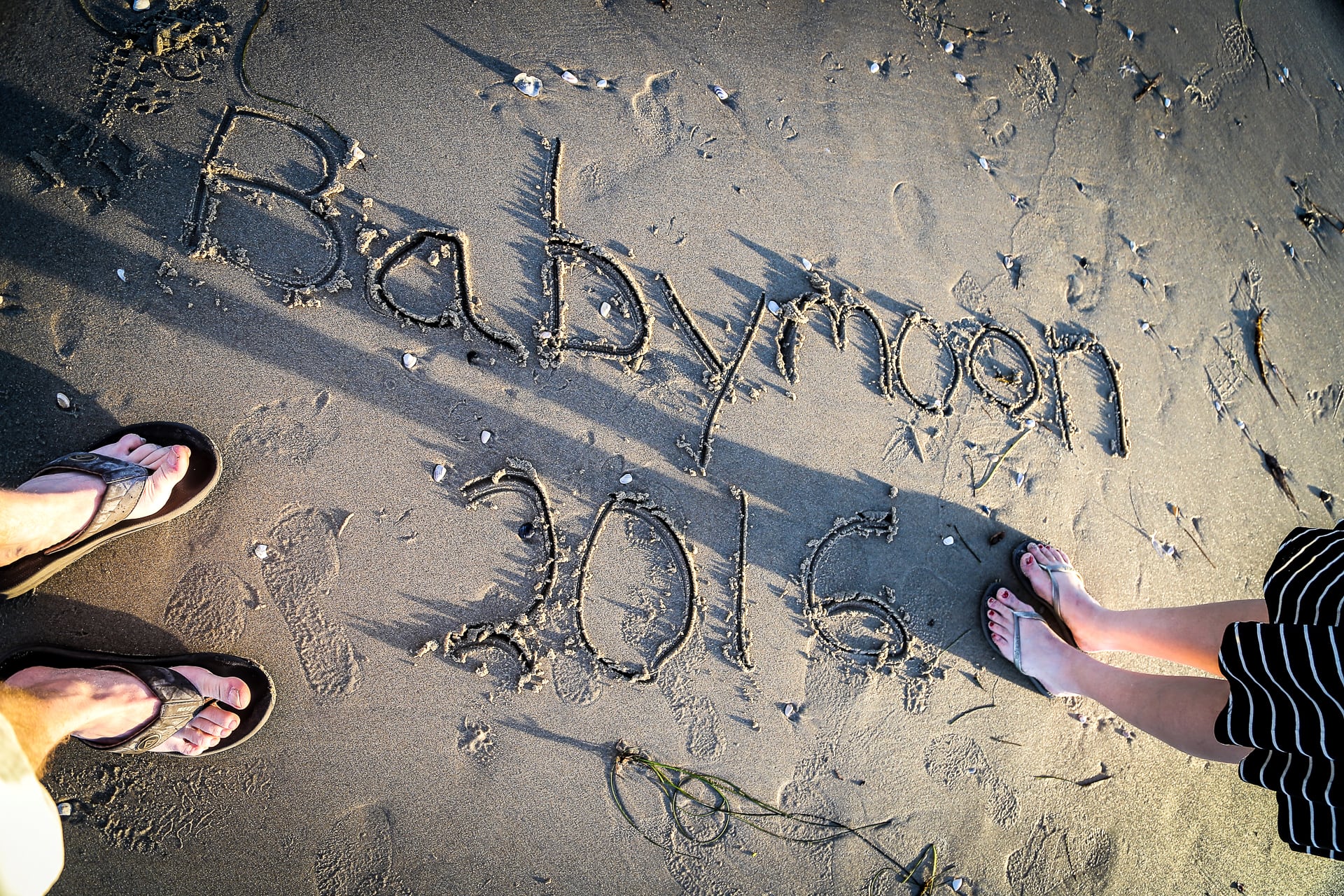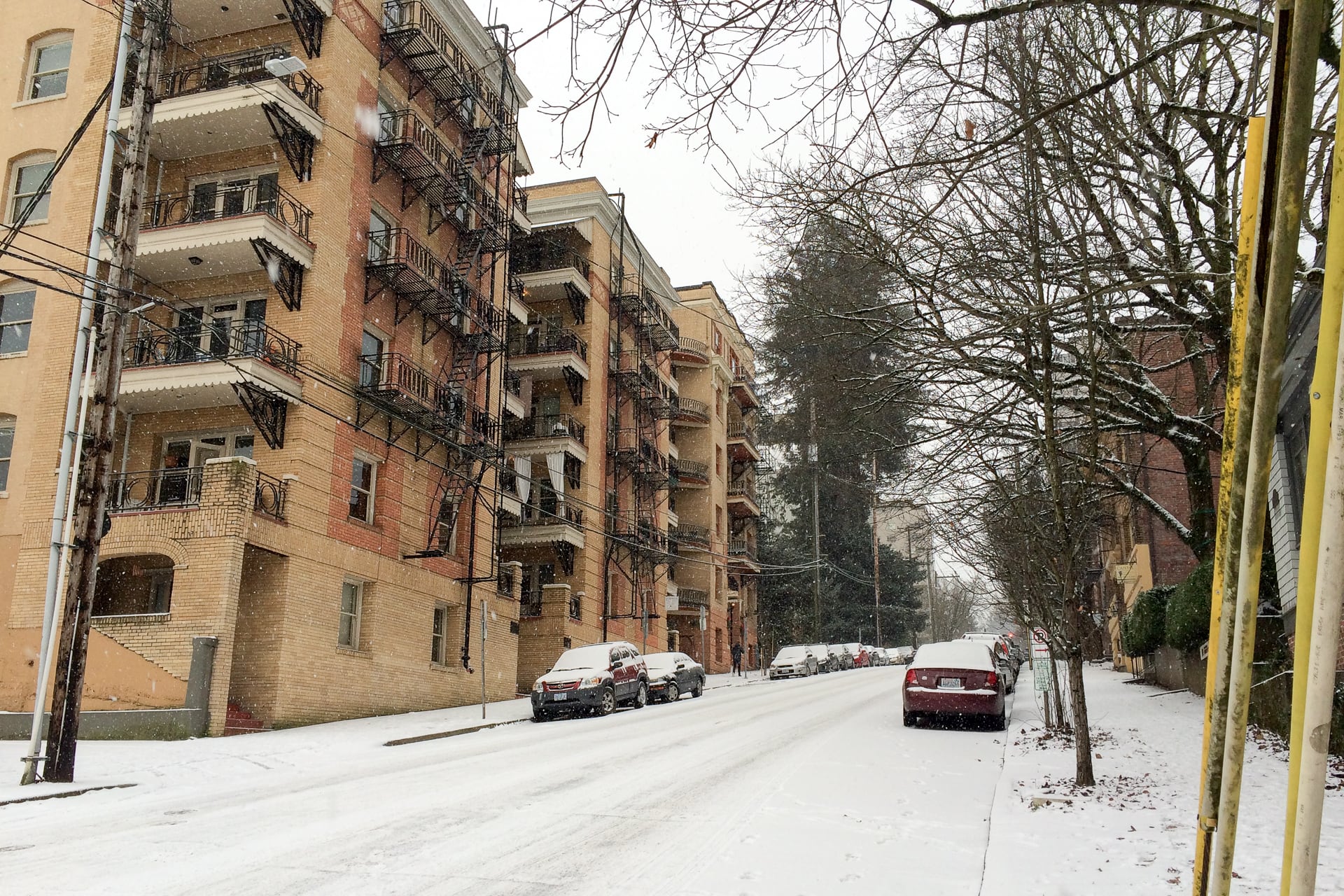
Yes, we were up at sunrise — which, in all honesty, isn’t that huge a feat in February. With that said, I can’t remember the last time I could see the sun rise in Portland. Yep, it’s been a pretty nasty winter in the PacNW, but you’d never even know it in Santa Barbara.

Lori, standing in the hallway of our hotel after a particularly delicious breakfast. Lori’s finally starting to feel like she looks pregnant. In Portland, it was a lot harder to tell with jackets, sweaters, scarves, etc., but here in sunny SoCal, there’s no hiding it!
Leaving the sightseeing agenda to Lori often makes for an interesting day, and today was no exception. As we were packing up our things I ask:
Me: “So, hun, what do you think we should do today?”
Lori: “Well, the mission later on, but we should definitely visit the courthouse first.”
Me: “Courthouse? Why the heck would we want to go to the courthouse? A courthouse is a courthouse. That sounds about as exciting as watching paint dry…on a courthouse.”
I should know better than to question my dear wifey when it comes to things…

Santa Barbara County Courthouse
So…this is the courthouse. A 150,000 square foot ode to Spanish Colonial architecture (that’s just the old jail above, and below, pictured from the main courthouse building). Wait ’til you see the rest!

Completed in 1929 following a devastating 6.8 magnitude earthquake, the Santa Barbara County Courthouse was hailed as the grandest Spanish Colonial Revival structure ever built. It’s easy to see that this was not mere hyperbole.
Following the 1925 earthquake that leveled many of the cities municipal buildings, the decision was made to rebuild the city in a manner that was consistent with the beauty and grandeur of Santa Barbara’s old mission and other early structures, and complimented the Mediterranean surroundings. The decision would completely alter the character of the city center and put Santa Barbara on a path to becoming one of the most beautiful cities in the U.S.




The best part about touring the courthouse is that it is largely open to the public. There are metal detectors and security entering active courtrooms, but besides that, you are permitted to enter and roam freely through much of the sprawling complex. You can even take an elevator up to the clock tower where commanding 360 degree views of the city await.




…and, you can peak in on the clock mechanics on your way back down.






We spent nearly an hour walking through and poking around the courthouse before heading up the hill to Santa Barbara’s renowned mission.

Mission Santa Barbara
In line with Spanish mission naming practices, Santa Barbara’s mission was named for the day on which it was founded: December 4, 1786, which is the feast day of St. Barbara in the Spanish Catholic tradition.
Santa Barbara was the tenth Franciscan-founded California mission and the only mission to remain under Franciscan leadership from its founding to the present day.



The current mission, as it stands today, was not completed in 1786, but rather 1820, following — you guessed it — a devastating earthquake in 1812.
Nearly 100 years later, the towers of the current mission suffered extensive damage during Santa Barbara’s 1925 earthquake, though much of the original construction survived.
Like most of the Spanish Missions, Santa Barbara was built with local (in this case, Chumash) indian labor. These “Neophytes” were volunteers, but the level of free will the Chumash actually had in the choice is still unclear to me.



By many standards, the Spanish missionaries appeared to have treated the Chumash Neophytes well, providing all basic needs and compensating them well — in fact the “Day in the Life” placard below sounds like a much better deal than what most Americans get for their efforts today.

On the other hand, the Spanish thoroughly exploited the local labor and resources for the benefit of Church, Crown and conquest with seemingly little consultation with the local communities, to the detriment of centuries-old customs, autonomy and social cohesiveness, and ultimately resulting in the Chumash being largely wiped out by European diseases for which they had no immunity. Those who survived lost most of their ancestral land (save for the Santa Ynez Reservation) and were assimilated into Spanish, Mexican, then American society.
On a lighter note, we made a stop at Lucky Llama coffee house on the way out of town for some delicious Cold Brew (that’s coffee, for the uninitiated). Nothing like cold brew and a road trip down the coast with your favorite travel buddy on a beautiful day.

Santa Barbara to Santa Monica
The distance between Santa Barbara and Santa Monica is not far (2 hours in good traffic, even taking the coastal route through Malibu), but we wanted to make sure we beat rush hour, which in hindsight is totally laughable considering that L.A. traffic in general seems to hover somewhere between “You’ve got to be kidding me” and “Kill me now.”
Despite the relative time crunch, we were able to make a few stops here and there along the way (the stretch between Santa Barbara and Oxnard along the 101 has long been one of my favorite driving routes). It was a great day to be at Carpinteria State Beach, but I imagine most days are.
If we had had a bit of extra time, we would have liked to stop at some of the other state beaches along the way. But California state beaches require paying a fee to park and we didn’t feel we’d have enough time to make good use of the $10 (which is good for the entire day at all state beaches, and possibly parks). We got around the fee at Carpinteria by parking in a nearby residential neighborhood and walking to the park.




Driving into Malibu on the 1, traffic was great — for about five minutes.

Settled in at my aunt and uncle’s place in Santa Monica, we get to leave the driving to my aunt who gave us a nice tour of their town on the way to pick up the kids. A great evening with the fam ensued with some fantastic Banh Mi, great conversation and a restful night’s sleep.




